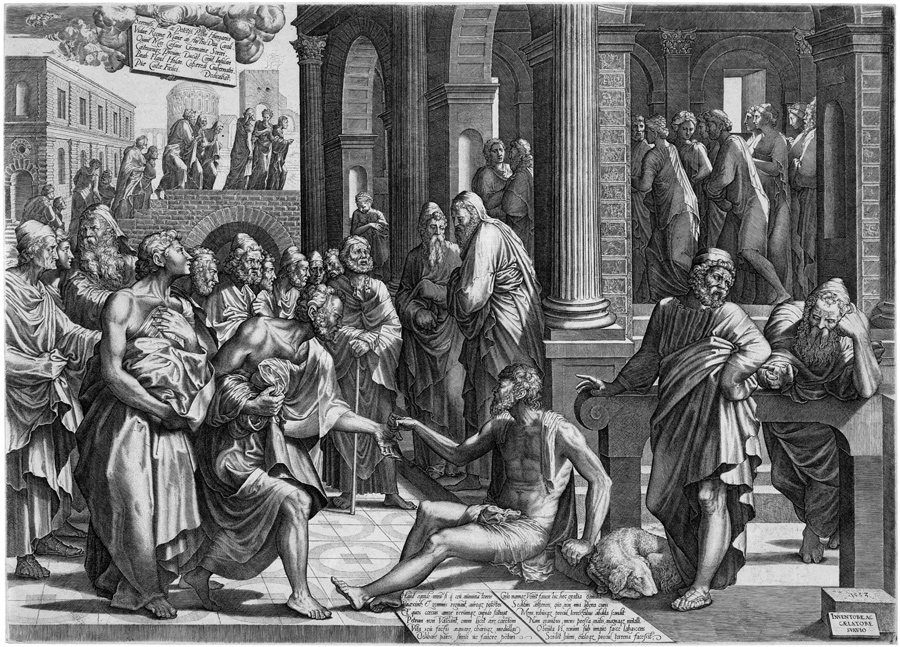Loading the page ...
Lambert Suavius
(real name: Lambert Zutman, circa 1510 Liège – between 1574 and 1576 Frankfurt a. M.)
St. Peter and St. John Healing a Lame Man. Burin and diamond-tip needle. 30.9 x 42.8 cm. 1553. Hollstein 23 II. Watermark: Small coat-of-arms with lettering Nivelles (cf. Briquet 9869–70, Bayonne, Paris, after 1544).
Lambert Suavius, an artistic celebrity of considerable versatility, was active as an architect, poet, painter, draughtsman and printmaker. He was a member of the humanist circle in Liège that gathered around his brother-in-law, Lambert Lombard, under whom he studied. After undergoing further training in Italy, he worked first in Liège and, from the 1550s onwards, in Antwerp and Frankfurt. Although he produced a series of reproductive engravings after originals by his tutor, Lombard, Suavius also made engravings of his own invention, as this impressive and rare sample of his oeuvre proves. Suavius must have been quick to make a name for himself as an engraver, as none other than Vasari mentions the artist approvingly in his Vite.
The portrayal of the miraculous healing of the lame man is a unique achievement not only as an original invention, but also in a technical sense. The artist uses a finely nuanced, intricate engraving technique which generates a subtle treatment of surface and light. It is likely that Suavius worked with a diamondtip needle, a tool that enabled him to engrave a filigree network of lines and different cross-hatching patterns, thus obtaining finely gradated tonal values. Every detail has a metallic precision, and the resultant beauty of line is an essential feature of his engraving technique. Suavius was doubtless familiar with the engravings of Giorgio Ghisi, who had been active for the Antwerp publisher Hieronymus Cock immediately before the publication date of our print; the technical brilliance of Suavius’ engraving style is closely related to the methods of the Mantuan Master. The utmost attention is paid to the rendering of the impressively bearded male heads, which are remarkably memorable and variously formed. The figurative canon reveals an ideal of beauty typical of the Italian art of the Renaissance. Thus this biblical scene is filled with the profane spirit typical of the art of the Flemish Romanists.
A very fine, contrasting and harmonious impression with narrow margins. In excellent, unrestored condition.
